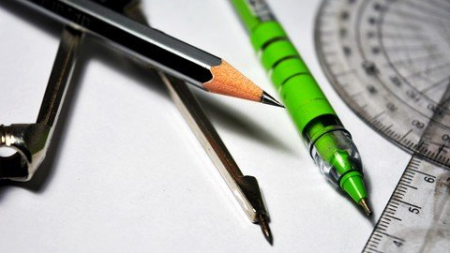
Genre: eLearning | MP4 | Video: h264, 1280x720 | Audio: AAC, 44.1 KHzLanguage: English | Size: 4.17 GB | Duration: 81 lectures 11h 59m
What you'll learn
In this course students will learn exactly what they need to know for their high school maths exams using the GCSE maths and iGCSE maths curricula.
This course covers many GCSE maths and IGCSE maths curricula including Cambridge CIE 0580 (Core & Extended) and Pearson Edexcel Maths A (Foundation & Higher)
The details of the content covered are as follows
Use letters to express generalised numbers and express basic arithmetic processes algebraically. Substitute numbers for words and letters in formulae.
Use letters to express generalised numbers and express basic arithmetic processes algebraically. Substitute numbers for words and letters in formulae.
Rearrange simple formulae.
Construct simple expressions and set up simple equations.
Manipulate directed numbers. Use brackets and extract common factors.
Expand products of algebraic expressions.
Use and interpret positive, negative and zero indices. Use the rules of indices.
Derive and solve simple linear equations in one unknown. Derive and solve simultaneous linear equations in two unknowns.
Use letters to express generalised numbers and express basic arithmetic processes algebraically.
Construct and rearrange complicated formulae and equations.
Manipulate directed numbers. Use brackets and extract common factors.
Expand products of algebraic expressions.
Manipulate algebraic fractions. Factorise and simplify rational expressions.
Use and interpret positive, negative and zero indices. Use and interpret fractional indices. Use the rules of indices.
Derive and solve linear equations in one unknown. Derive and solve simultaneous linear equations in two unknowns.
Derive and solve simultaneous equations, involving one linear and one quadratic.
Derive and solve quadratic equations by factorisation, completing the square and by use of the formula. Derive and solve linear inequalities.
Continue a given number sequence. Recognise patterns in sequences including the term to term rule and relationships between different sequences.
Interpret and use graphs in practical situations including travel graphs and conversion graphs. Draw graphs from given data.
Draw and interpret these graphs. Solve linear and quadratic equations approximately, including finding and interpreting roots by graphical methods.
Recognise, sketch and interpret graphs of functions.
Represent inequalities graphically and use this representation to solve simple linear programming problems.
Continue a given number sequence. Recognise patterns in sequences including the term to term rule and relationships between different sequences.
Express direct and inverse proportion in algebraic terms and use this form of expression to find unknown quantities.
Interpret and use graphs in practical situations including travel graphs and conversion graphs. Draw graphs from given data.
Apply the idea of rate of change to simple kinematics involving distance– and speed– graphs, acceleration and deceleration.
Calculate distance travelled as area under a speed– graph.
Solve associated equations approximately, including finding and interpreting roots by graphical methods.
Draw and interpret graphs representing exponential growth and decay problems. Recognise, sketch and interpret graphs of functions.
Estimate gradients of curves by drawing tangents.
Discriminate between maxima and minima by any method.
Understand that symbols may be used to represent numbers in equations or variables in expressions and formulae.
Understand that algebraic expressions follow the generalised rules of arithmetic.
Use index notation for positive and negative integer powers (including zero).
Use index laws in simple cases.
Evaluate expressions by substituting numerical values for letters.
Collect like terms.
Multiply a single term over a bracket.
Take out common factors.
Expand the product of two simple linear expressions.
Understand that a letter may represent an unknown number or a variable.
Use correct notational conventions for algebraic expressions and formulae.
Substitute positive and negative integers, decimals and fractions for words and letters in expressions and formulae.
Use formulae from mathematics and other real-life contexts expressed initially in words or diagrammatic form and convert to letters and symbols.
Derive a formula or expression.
Change the subject of a formula where the subject appears once.
Solve linear equations, with integer or fractional coefficients, in one unknown in which the unknown appears on either side or both sides of the equation.
Set up simple linear equations from given data.
Calculate the exact solution of two simultaneous equations in two unknowns.
Solve quadratic equations by factorisation (limited to x2 + bx + c = 0).
Understand and use the symbols >,

